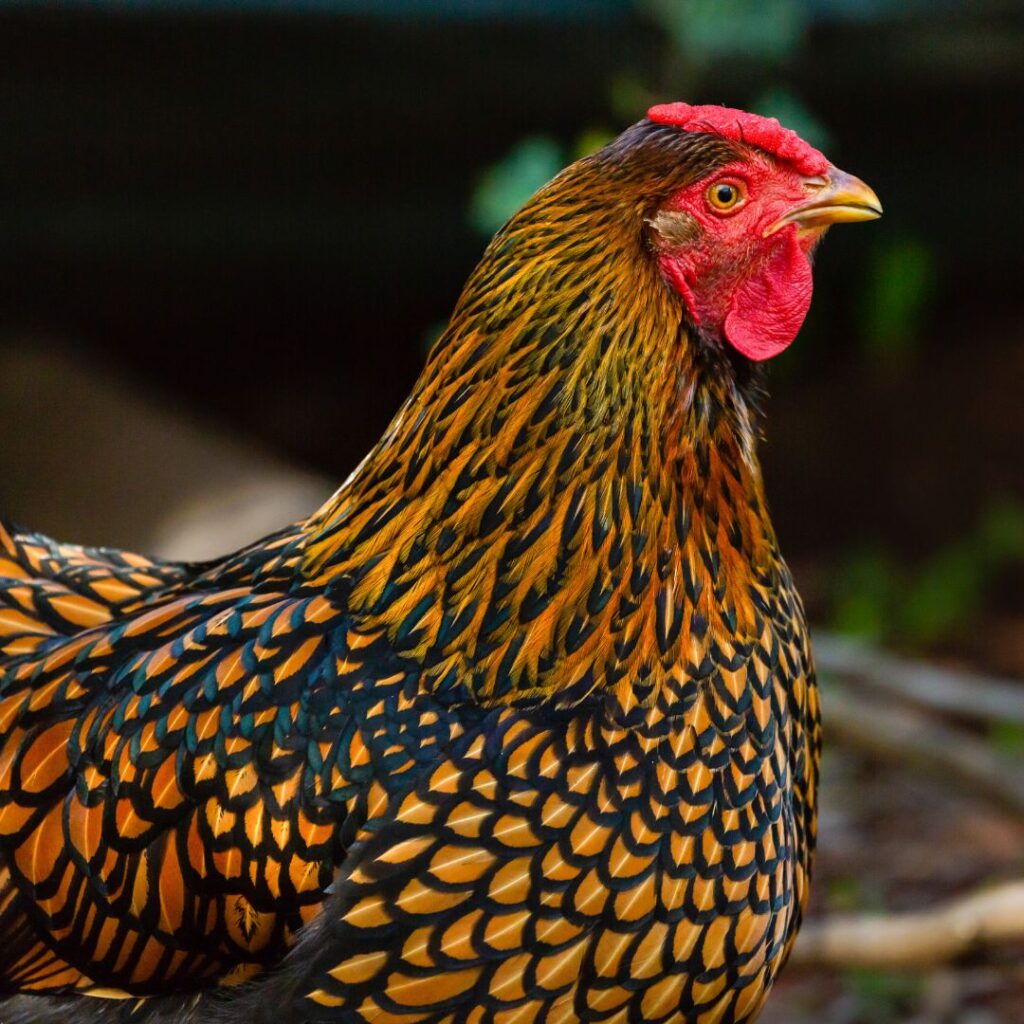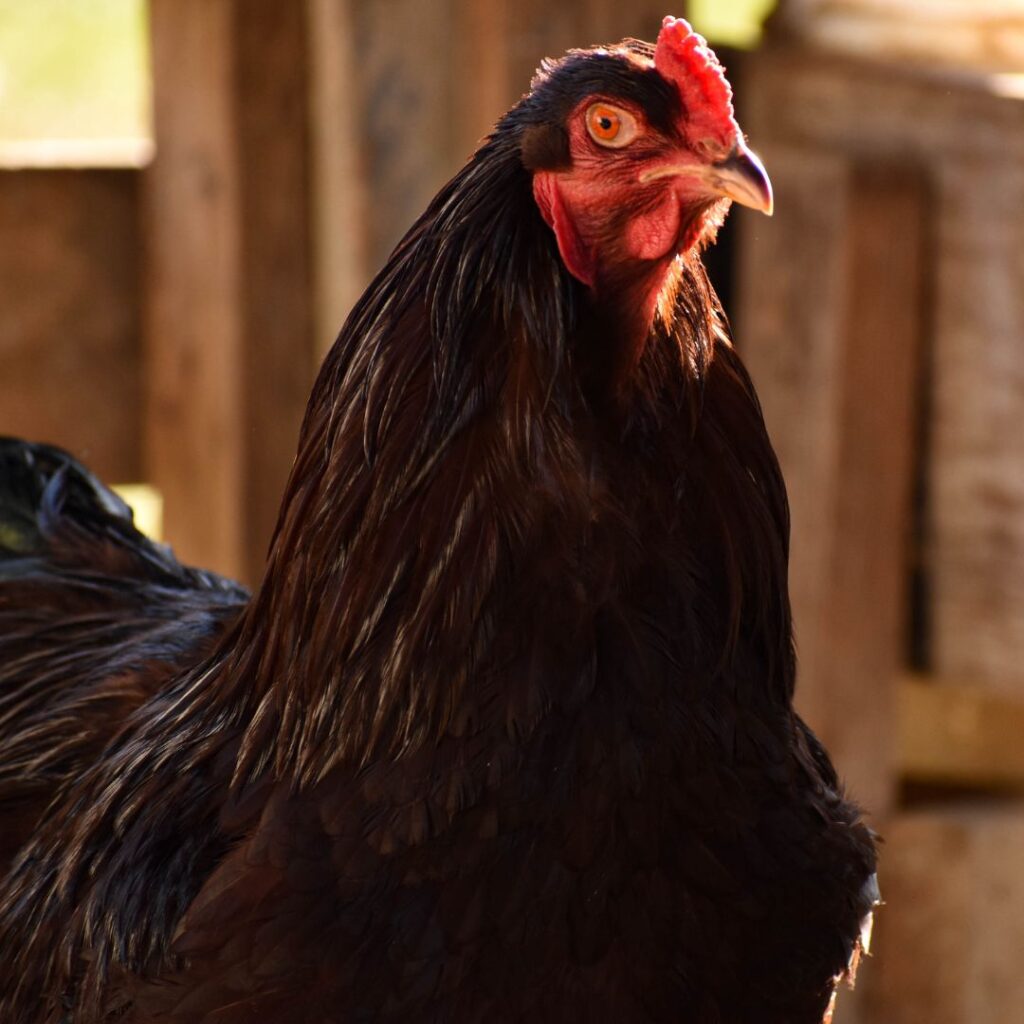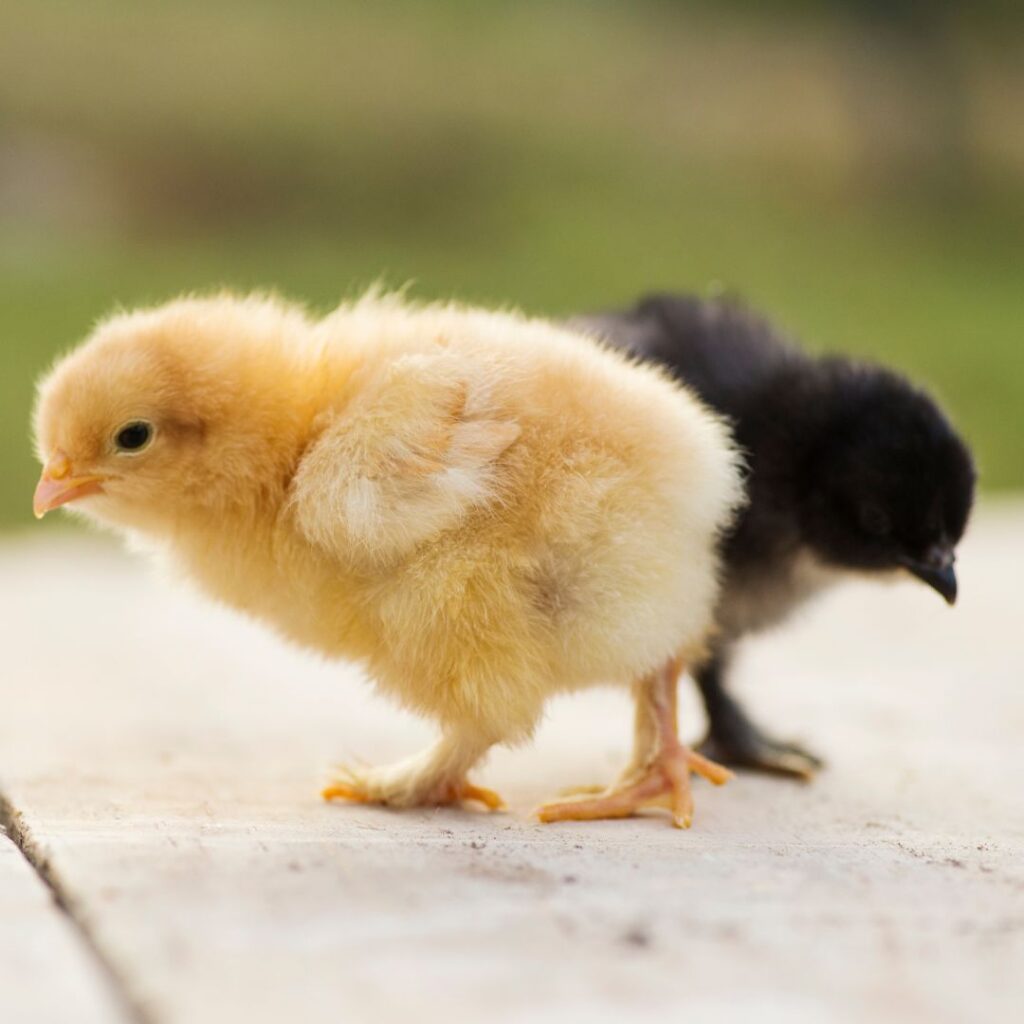Cornish chickens are a heritage breed that is becoming increasingly rare. They are stocky and have a sweet disposition, making them a favorite among chicken enthusiasts.
In this blog post, we will explore some interesting facts about Cornish chickens, including their origin, and appearance, as well as the Cornish Chicken characteristics. We will also discuss whether or not they are good free-range birds and how well they get along with other chickens. So if you’re curious about Cornish chickens, be sure to read on!
Cornish Chicken Fun Facts
The Cornish chicken is a heritage breed that was developed in Cornwall, England in the 19th century. The breed was created by crossing two existing breeds of chickens: the Dorking and the Plymouth Rock. The resulting chickens were larger and heavier than either of their parent breeds, and they quickly became popular for their meat production.
Cornish Chicken History
The breed was created by crossing two existing breeds of chickens: the Dorking and the Plymouth Rock. The resulting chickens were larger and heavier than either of their parent breeds, and they quickly became popular for their meat production.
The appearance of Cornish Chickens
Cornish chickens are easily recognizable by their large, stocky bodies. They have short legs and a deep chest, which gives them their characteristic “cobby” appearance. Cornish chickens come in a variety of feather colors and patterns, but the most common color is white.
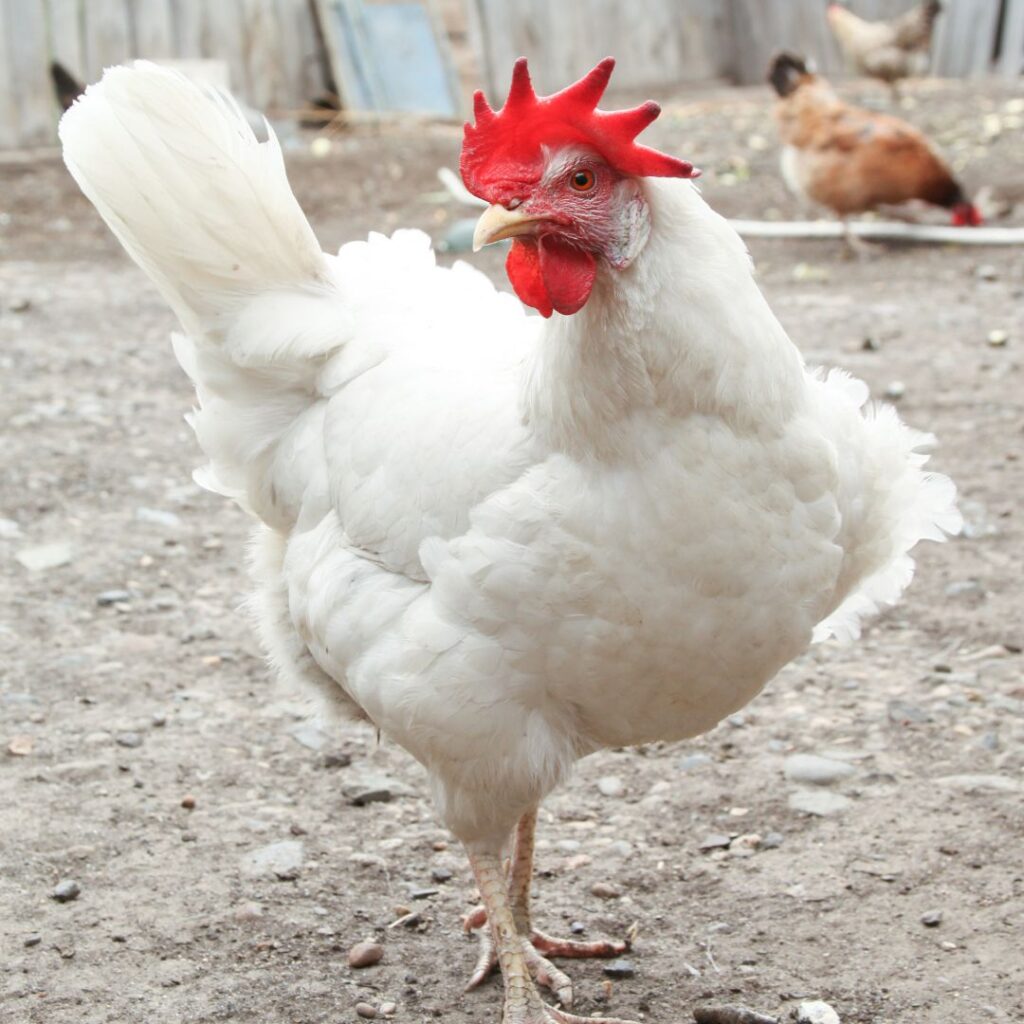
Cornish feather colors
The most common color of Cornish chickens is white, but they can also come in a variety of other colors and patterns. Some of the other colors that Cornish chickens can include black, blue, buff, silver-laced, and partridge.
The American Poultry Association and American Bantam Association recognize these cornish chickens:
- White
- White Laced Red
- Buff
Bantam’s recognized are:
- Dark
- White
- White Laced Red
- Buff
- Black
- Blue Laced Red
- Mottled
- Spangled
Interested in checking out other Bantam Breeds, read this article on the Sebright Bantam Here.
What makes the Cornish chicken’s appearance so distinctive?
One of the most notable things about Cornish chickens is their large size. They are much larger than other breeds of chickens, and they can weigh up to 12 pounds.
Another noticeable thing is that the physical appearance of hens and roosters share very similar body shapes. This isn’t common among other breeds of chickens.
The Cornish Chicken has short, thick legs with wide-set feet; they’re also massive compared to other breeds.
Their feathers lack any softness making them less fluffy than your typical backyard bird. The feathers are more similar to a game bird than the average backyard chicken.
These chickens have small pea combs and wattles, which are a benefit to less risk of frostbite in harsh winters, making this a great trait as a winter/cold hardy breed.
How big do Cornish chickens get when they’re adults?
Cornish chickens are one of the largest chicken breeds, and they can weigh up to 10-12 pounds when they’re fully grown. Hens are typically smaller but still an impressive 7-8 pounds
What do Cornish chicks look like?
Cornish chicks are small and yellow, with downy feathers on their bodies. You’ll notice no feathers on the legs or feet They grow quickly, and within a few weeks, they will start to look like miniature versions of adult chickens. Don’t confuse their fast growth and size with maturity though.
Cornish chicken maturity
Cornish chickens mature at a normal chicken rate, this can vary by the breed type of cornish chicken, for example, White Laced Red Cornish Chickens mature at 18 weeks and Dark Cornish birds mature closer to 22 weeks.
note: Cornish meat birds such as the cornish cross, cornish game hens, and cornish rocks mature much quicker between 4 – 8 weeks depending on the breed type.
Cornish hens and their ability to lay eggs
The Cornish hen and her sisters are o.k. laying hens. Thanks to today’s modern hatcheries, they can produce approximately 150 eggs per year.
Broodiness: Do Cornish hens want to lay their eggs?
They do lean on the broody side and want to hatch chicks. However, Cornish hens that are broody have been known to unintentionally crack and even smash their eggs.
They’re not well-designed to sit with their substantial, bulky bodies and short legs.
Cornish hens are excellent moms when they do manage to hatch eggs. They’re doting and protective of their young.
Did your Cornish Hen Stop Laying Eggs? There could be many reasons why, find out more in this link.
Cornish chicken; cold hardy?
Cornish chickens are a tough breed and can withstand cold. They have thick feathers that protect them from the cold, and they don’t mind being outdoors in the snow. In fact, they actually prefer to be outside!
Although they have small pea combs making them less vulnerable to frostbite, extra care should be taken with any breed to avoid frostbite. A dry area is key and there are preventative measures such as placing petroleum jelly or Musher’s Secret Dog Paw Wasx on their combs and wattles regularly. This will help a great deal if you live in a region that has frequent wet cold weather (rain, sleet, snow).
While they’re pretty cold hardy chickens, you still need to provide all the same shelter needs you do for any flock in winter climates. Secure coop from drafts and moisture, An area of their run is shoveled and covered from the elements.
“The two waterers we prefer are a bit pricey but have decent capacity and are designed for multiple chickens. This heater waterer holds up to 2 gallons and can accommodate up to 15 chickens. This is adequate for most backyard chicken keepers. This second heated waterer holds up to 3 gallons and can accommodate up to 35 chickens. We like the detachable cord option on this for year-round use.”
— Gilmore’s , Chicken Care In Winter Months
Are Cornish Chickens Heat Tolerant?
While they don’t mind the cold, Cornish chickens are not as tolerant to heat. They can overheat easily due to their large body size and thick feathers. When temperatures start to climb, make sure they have access to plenty of cool fresh water (consider adding ice cubes to waterers) and shade.
Tarp or lean-to in the run area for shade is helpful as well as frozen treats such as freezing scratch or vegetable scraps in a pan of water then put out for your flock.
Can Cornish Free range?
Cornish chickens are active and love to roam. They’re known for being good foragers, and they love to scratch in the dirt for insects and grubs. Given the chance, they will free-range all day long. However, they can also do well in confinement if their space needs are met.
Be sure to check out our article on pet-friendly, including chicken friendly lawns (dog-friendly grasses).
Space Needs of the Cornish Chicken
They need a large coop and plenty of room to move around.
note: There are different coop and space requirements for the Cornish Cross, the Cornish Roaster and the Cornish game hen.
- Coop Space: Recommended 6 square feet per bird. Overcrowding can lead to health problems and undesirable behaviors like feather pecking or egg eating.
- Run Space (if not free-range): 10-15 feet per chicken (these are big kids!)
- Perch Space: Fifteen inches, again these are big girls and boys. We do suggest you keep these a bit lower than your average chicken, keeping in mind that getting down from perches can damage their legs due to their size.
- Nesting Box Size: 12″ x 12″, with 12″ deep. Adding extra nesting materials will also help with reducing egg breakage.

Cornish chicken temperament: Just what kind of birds are they?
Cornish chickens are a docile and sweet-tempered breed. They’re not known for being aggressive, and they get along well with other chickens. They’d do well with other docile breeds like Brahmas, Cochins, and Orpingtons. They’re also good around children, making them a great choice for families.
While roosters can be territorial, they’re not usually aggressive toward people.
Cornish chickens are social birds and do well in a flock. They get along with other chickens, and they’re not known for being aggressive.
How are Cornish chickens around children?
Cornish chickens are good around children and make a great choice for friendly pet chickens for families. Children and chickens should not be left unattended by an adult.
Are Cornish roosters aggressive to people?
While Cornish roosters can be territorial, they’re not usually aggressive toward people.
How well do Cornish chickens get along with other chickens?
Cornish chickens are social birds and do well in a flock. They get along with others, and they’re not known for being aggressive.
Cornish chickens: Are they noisy?
All birds make noise, but Cornish chickens are not known for being particularly noisy. What sounds do Cornish chickens make? Clucking, cooing and crowing. While roosters are a no in urban areas, the hens are well suited for urban homesteads with their quieter nature.
Cornish life expectancy
The average lifespan of a Cornish chicken is about three to four years. However, some have been known to live up to eight years with good care.
About the Meat production of Cornish chickens
Cornish chickens are great meat birds. These birds have very large breasts and therefore have a respectable amount of meat. Cornish meat birds produce tender and flavor-filled meat.
In comparison to modern broilers, Cornish chickens take a long time to mature completely.
You may anticipate your market weight to come in around 6.5-8.5 pounds at full maturity.
Cornish Breeds were developed for Meat Birds.
When it comes to chicken breeds, there are many different types to choose from. However, if you’re looking for an industrial meat bird, then the Cornish Cross is the chicken for you. Cornish Crosses are the chicken you buy at the grocery store.
They’re larger than other chicken breeds, and they have a higher percentage of breast meat. As a result, they’re perfect for those who want to raise chickens for their meat. If you’re looking for an industrial meat bird, then be sure to check out the Cornish Cross aka Rock Cornish broiler chicken. You won’t be disappointed.
Cornish Game Hens
Most likely you’ve seen heard of the Cornish Game Hen, another way to eat Cornish chickens in the U.S. These are sold in grocery stores as well as farmers’ markets and found on menus.
These come from the Jumbo Cornish Cross Rocks, which are sexed and only cornish hens are used. This hen is sent to market for meat at an early maturity age of 4 weeks. Market weight is around two – two and a half pounds per hen.
Jumbo Cornish X, also known as Cornish Cross and Cornish Rock
The Cornish Cross chickens are a hybrid developed by crossing the commercial Cornish chicken with The White Rock breed. Its primary purpose is its ability to produce more meat in less time than traditional breeds.
At maturity, Cornish cross roosters will weigh from three to four pounds in six to eight weeks cornish cross hens will take about ten days longer to reach the same size.
Cornish Roaster
The Cornish Roaster is a hybrid breed of chicken that takes about 2 weeks longer to mature than the Jumbo Cornish Cross. Despite its slower growth, the Cornish Roaster still has all of the same qualities as its cousin: large breasts and thighs, yellow skin, and easy to dress. In fact, many of the potential leg problems often associated with the Cornish Cross are avoided in Roasters due to their slower growth.
This bird is more active than the Cornish Cross and has a good feed conversion rate.
It’s suggested that you process the pullets (young hen) as fryers, these can reach a dressed weight of 3-4 lbs. It’s best to process the cockerels (young males) as roasters in 8 to 9 weeks when they’ll reach a dressed weight of 8-9 lbs. at 12 weeks.
If you’re interested in raising chickens for a delicious meat bird with all of the goodness of a Cornish Cross but none of the leg problems, look no further than the Cornish Roaster!
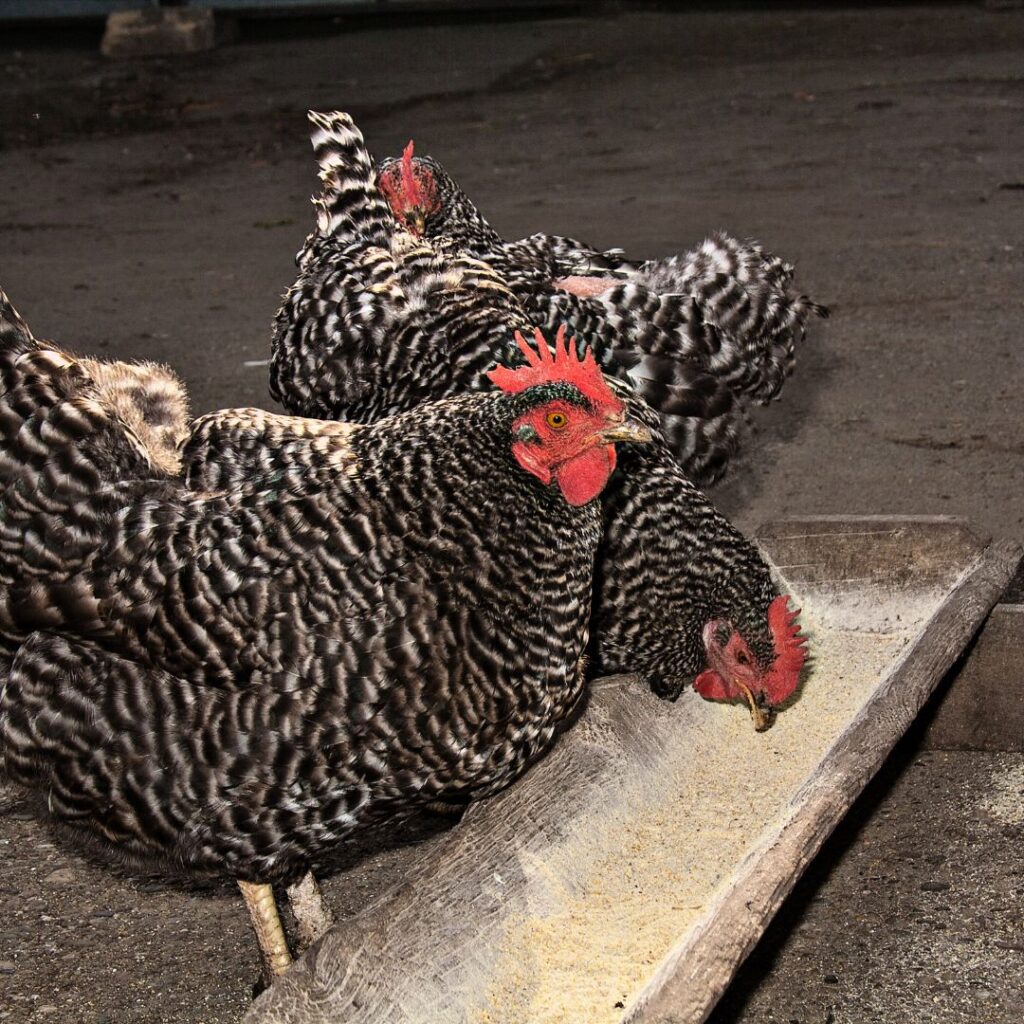
5 Alternative Breeds instead of Cornish chickens
If you’re looking for an alternative to the Cornish chicken, there are a few other breeds that might be a good fit.
Here are some of our top picks:
- Ameraucana Chicken: These beautiful birds come in various colors and lay blue or green eggs. They’re known for being friendly and easy to handle. (also read about the Araucan chickens here)
- Barred Plymouth Rock Chicken: This popular breed is a good choice for egg production and meat chickens. They’re friendly birds that do well in cold climates. More on the Barred Plymouth Rock can be read here.
- Orpington Chicken: Orpingtons are a versatile breed that comes in various colors. They’re good layers and make excellent mothers.
- Rhode Island Red Chicken: Another popular breed, Rhode Island Reds are known for being on of the best egg-laying breeds and being excellent meat chickens. They’re also hardy birds that do well in both hot and cold climates.
- Jersey Giant Chicken: As their name suggests, Jersey Giants are large birds. They’re good layers and make excellent meat birds. This breed was produced by crossing a few large breeds to produce what is now known as one of the largest chicken breeds.
The first “Black Giants” as the breed was initially called was created from crossing Black Javas, Dark Brahmas, and Langshan hens. Later on, they added the Cornish chicken to improve growth rates.
Take a moment to read about the prolific white egg layer (large – X-large eggs!), the White Leghorn and Blue Egg layers, the Araucana, Ameraucana, and Cream Legbar, and the famous Easter Egger, which lay rainbow-colored eggs. We’re sure you’ll enjoy these.
No matter which breed you choose, be sure to do your research before bringing any chicken home. All breeds have different needs and personalities, so it’s important to find one that will fit well into your flock and lifestyle.

Common Myth About the Cornish Chicken
There are a few common myths about the Cornish chicken that we want to clear up.
Myth#1 Some people believe that Cornish chicken is only good for meat production. While they are excellent meat birds, they can also make great egg layers. Most likely they are confusing the difference between the Cornish chicken vs the Cornish Cross chicken, Cornish roaster and the Cornish game hen.
Myth#2 Cornish chickens are not difficult to care for. As long as you provide them with a good diet and plenty of space to roam, they will do just fine. Cornish chickens are a good choice if you’re looking for a winter-hardy chicken. They’re hardy birds that can withstand cold weather quite well. However, they’re not immune to frostbite and should be given a warm place to roost at night if the temperatures dip below freezing.
Myth#3 Cornish chickens are not aggressive birds. While roosters can be territorial, they a sturdy bird with a sweet disposition,
Cornish chickens might be the right breed for you. With proper care, they can make great additions to any flock. Do your research before adding any chickens to your flock, and visit your local farm store for all your chicken needs!
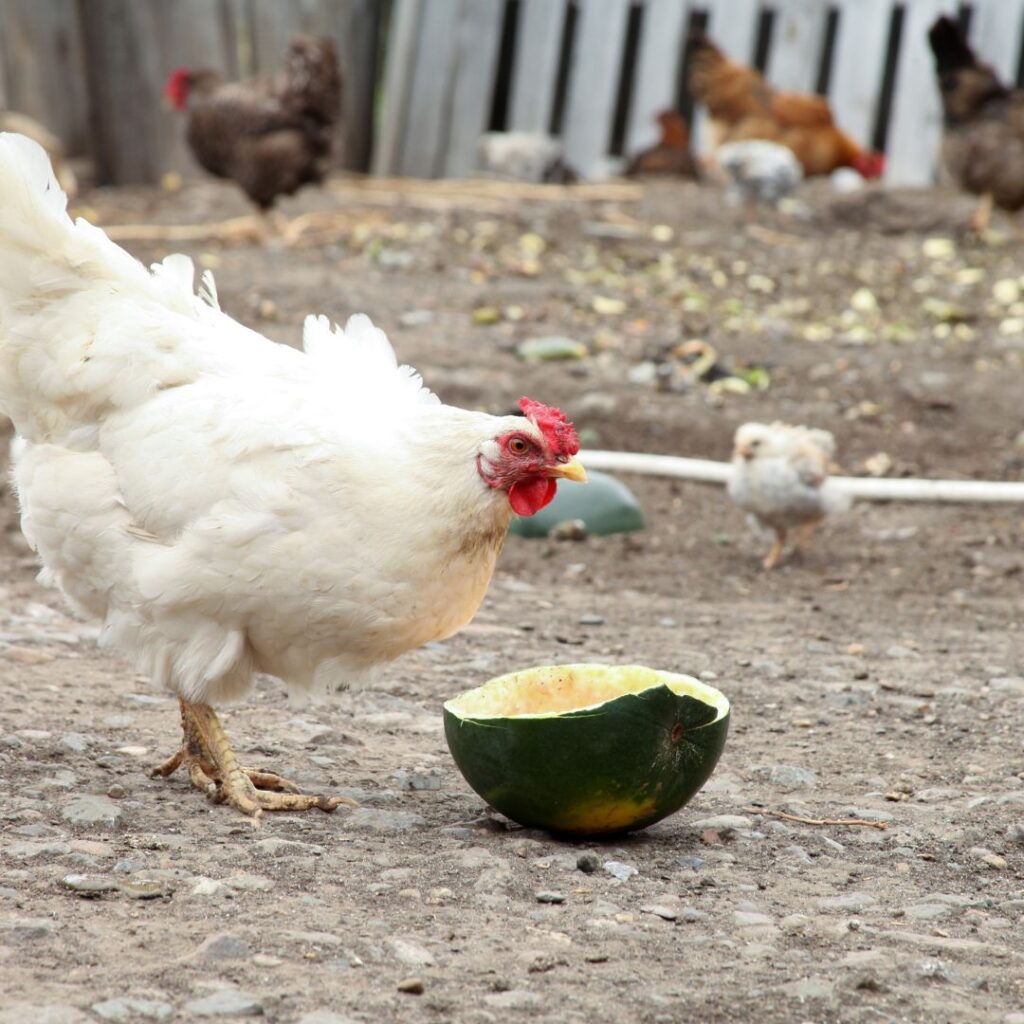
Conclusion
The Cornish chicken is a great choice if you are looking for a chicken that is good for both meat and egg laying. They are friendly birds, can provide meat and eggs and foraging to reduce insects. They do well in cold climates, and while they aren’t the best in hot climates, birds can withstand heat with the right care and conditions.
If you are hoping for birds whose sole purpose is meat chickens, then you are looking for the Cornish crosses, Roasters, and Game hens. These are all praised for being the ultimate meat bird.
Cornish chickens might be the right breed for you. With proper care, they can make great additions to any flock.
Do your research before adding any chicken to your flock, and visit your local farm store for all of your chicken needs!
If you are new to keeping chickens, read our guide for beginners.

